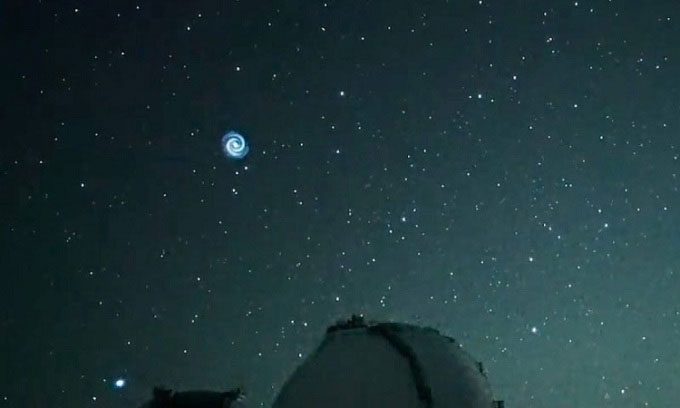SpaceX’s Falcon 9 rocket successfully launched a global positioning satellite into orbit, leaving behind a glowing vortex in the sky over Hawaii after completing its mission.

The blue vortex appeared in the sky over Hawaii on January 18. (Photo: National Astronomical Observatory of Japan)
SpaceX Launches Global Positioning System (GPS) Satellite for the U.S. Space Force at 7:24 PM on January 18, according to Hanoi time. Shortly after, the Subaru Telescope detected a strange vortex in the sky. “The vortex appears to be related to the recent satellite launch activities of SpaceX,” shared the authorities managing the Subaru telescope at the National Astronomical Observatory of Japan. They also published the image of the vortex taken from the telescope located on the summit of Mauna Kea on the Big Island of Hawaii.
Scientist and satellite tracking expert Scott Tilley noted that the location of the vortex was close to where the second stage of the Falcon 9 rocket would pass a few minutes after launch. Meanwhile, the first stage landed back on Earth on a drone ship at sea.
This is not the first time a glowing vortex has been spotted after a SpaceX rocket launch. Residents in various places, such as New Zealand, have previously seen similar vortices following Falcon 9 rocket activities. In earlier sightings, witnesses reported that the vortex formed when the upper stage of the Falcon 9 released unused fuel during its descent into the ocean. According to Spaceweather.com, the upper stage of the rocket can spin around its longest axis to stabilize its flight path, creating a vortex shape.
The Falcon 9 rocket is famous for creating many interesting shapes after launch, such as “the cosmic jellyfish” in the sky above the coastal region of Florida. Such shapes arise when gas from the rocket’s engine nozzle experiences higher pressure in the atmosphere and is illuminated by sunlight, according to Chris Combs, a professor of aerodynamics and mechanical engineering at the University of Texas at San Antonio.
SpaceX has launched five missions into space in the first 19 days of 2023. If this pace continues, the company is on track to launch a total of 96 rockets by the end of the year, although weather and technical factors may cause launch delays. In 2022, SpaceX set a record with 61 launches, nearly double the 31 launches in 2021.


















































